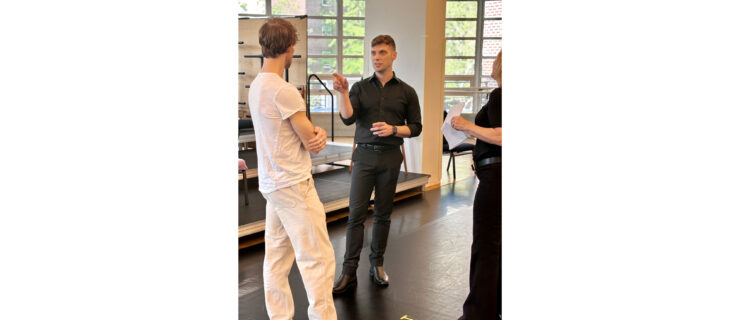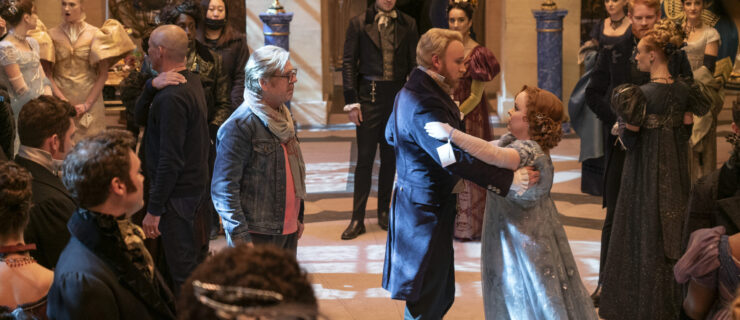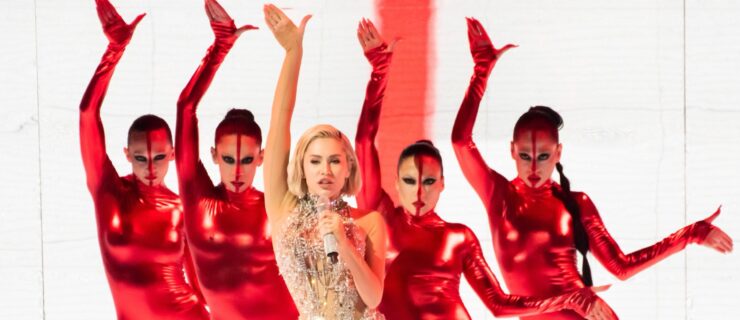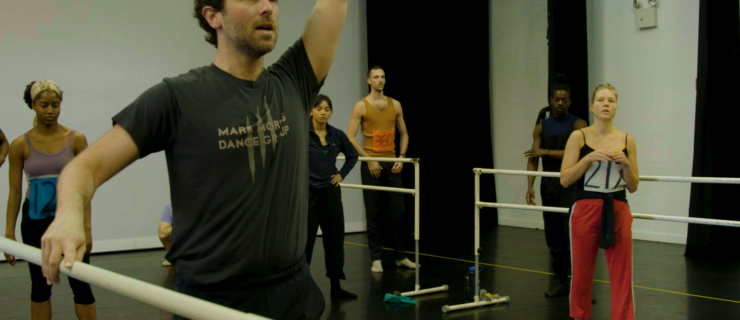Ballet Arizona
Ballet Arizona
A Midsummer Night’s Dream
Phoenix Symphony Hall
Phoenix, AZ
October 31–November 2, 2008
Reviewed by Kenneth LaFave
Photo by Rosalie O’Connor.
Ginger Smith as Hermia and
Russell Clarke as Lysander.
, like all Shakespearean dramas, is many things in one: low comedy and high philosophy; a collision of magic and matter; a celebration of love and a revelation of its absurdity. The trick to making it into a ballet is to retain an outline of the story while translating into dance at least a few of those myriad other things. This was no trouble for Ib Andersen, whose Midsummer Night’s Dream was fleet, funny, thoughtful, touching and, not incidentally, a vivid showcase for Ballet Arizona’s talents.
Balanchine famously dropped the Pyramus-and-Thisbe farce from his 1962 version; others have put that in while tossing out Theseus and Hyppolyta, the mortal counterparts of Oberon and Titania. Andersen kept it all and made it work. He told the story plainly through pantomime, but the dancing wasn’t merely dressing. He conveyed character through casting and choreography, from the thunderous pirouettes danced by Astrit Zejnati as an imperious-yet-benevolent Oberon, to the spring-loaded jumps by Roman Zavarov’s sinewy Puck. There was a kind of scale to the casting: Zejnati’s height, presence and relative maturity signaled Oberon’s regality; Chelsea Wilcox, whose effortlessly musical phrasing was a pleasure to watch, was his aptly statuesque Queen Titania. Zavarov, though diminutive, dominated through humorous facial expressions and gestures that were always just a shade short of sexual. In Andersen’s vision of this oft-interpreted comedy, the rituals of love mask a teeming, natural lust.
The four confused lovers were Paola Hartley as the hapless Helena, Ginger Smith as the much-desired Hermia, Russell Clarke as Lysander, and Ilir Shtylla as Demetrius. When Puck’s magic went astray and the men switched from chasing Hermia to chasing Helena, Smith’s self-assurance turned to shock, while Hartley’s desperation only got kicked up a notch. The men pulled at Hartley until, in one moment that provoked a gasp from the audience, she was tossed high into the air before collapsing into her suitors’ arms.
Daniel Marshalsay as Bottom wore a huge donkey head, moving around the stage in stiff-jointed parody. As in most Midsummers, Act II was all divertissement, the triple wedding framing an hilarious staging of the Pyramus-and-Thisbe play and a triumphant duet with Kenna Draxton and Ross Clarke as Hyppolyta and Theseus.
The music was Mendelssohn’s “Overture and Incidental Music” for the play, fleshed out with additional Mendelssohn scores that included an effective use of the Italian Symphony. The Phoenix Symphony, under the alert baton of conductor Timothy Russell, was coordinated to perfection with the dance.



